Fossil Friday! AZ Invertebrate Fossils
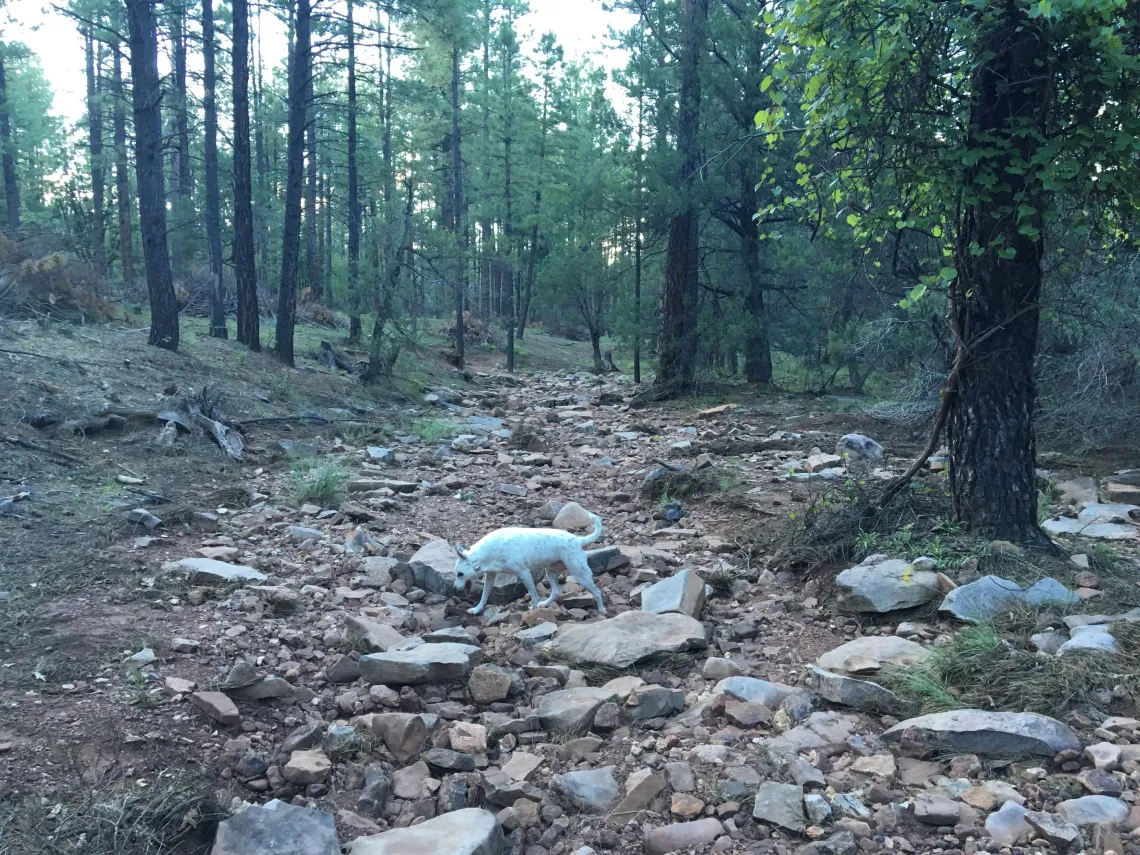
Fossil collecting site near Diamond Point, Payson, AZ.
Several hundred million years ago during the Paleozoic era, the geologic conditions in Arizona were much different than they are today. The state was covered by a warm, shallow sea that was home to different kinds of marine organisms - corals, crinoids, bryozoans, mollusks, fish and plants - to name a few. At that time (~500-300 million years ago), prehistoric animals we consider today like dinosaurs and land-dwellers were not yet around. Life thrived in the ocean, and Arizona was no exception. Today, evidence of Arizona's ocean life and once-abundant marine flora and fauna is preserved in fossils found across the state. Most of those fossils are found in sedimentary host rock, their organic material buried in the seafloor and replaced by minerals over time.
The AMMNRE Museum mineral collection contains several fossil specimens along with our minerals, ores, and mining artifacts. Since fossils tell us information about prehistoric life and environmental conditions, they are an important part of Arizona's history and we plan to showcase them in our future exhibits.
Until then - to learn more about Arizona fossils, check out the following websites:
- National Park Service: Fossils at Grand Canyon National Park
- National Park Service: Geologic Formations at Petrified Forest National Park (newer Mesozoic fossils here like petrified wood and fossil reptiles!)
- Arizona-Sonora Desert Museum: The Geologic Origin of the Sonoran Desert
- Arizona Museum of Natural History: Arizona Through Time
- Southwest Paleontological Society
- Fossilsites.com: Arizona Fossil Sites and Collecting Localities
We've highlighted a few of our specimens below.
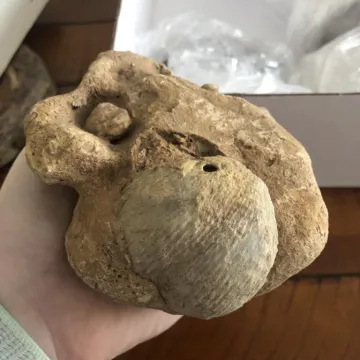
Brachiopod in Kaibab Limestone from Happy Jack, Coconino Co., AZ. Permian age (~275 milion years ago). Brachiopods are shelled animals that look like mollusks or bivalves, but are actually in a separate phylum altogether. Most types of brachiopods are extinct, but some modern species still live on the seafloor.
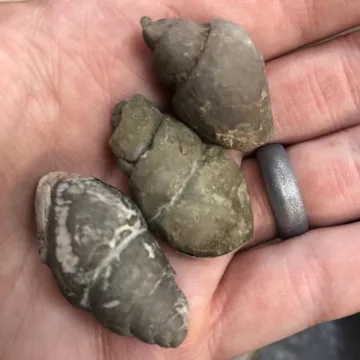
Gastropods from the Naco Formation, Kohls Ranch, Gila Co., AZ. Pennsylvanian age (~300 million years). Gastropods are mollusks and - you guessed it- commonly known as snails today. The name 'gastropod' comes from the Greek word 'gastro' meaning stomach and 'pod' meaning foot.
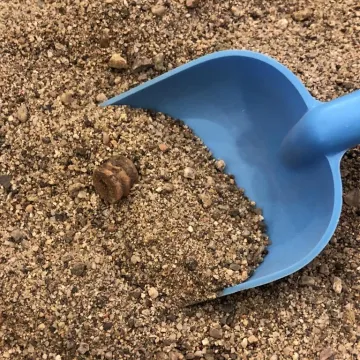
Crinoid stem from the Naco Formation, Kohls Ranch, Gila Co., AZ. Pennsylvanian age (~300 million years). The crinoid organism itself may have been much larger, but it is most common to find broken fragments of the stem like this one. Crinoids were very common and diverse during the Paleozoic period, and their ancestors still exist today.
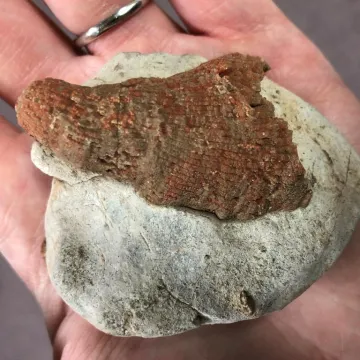
Horn coral (replaced by jasper, in matrix) from the Naco Formation, Kohls Ranch, Gila Co., AZ. Pennsylvanian age (~300 million years). It's not hard to imagine why this animal was called 'horn' coral, is it? The Naco formation yields an abundant array of marine invertebrate fossils and this is one of our favorites.
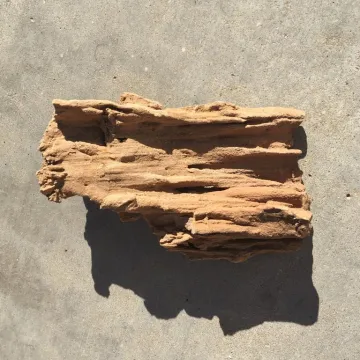
Coral from Payson area, Gila Co., AZ. Paleozoic age - exact age unknown. This was pulled straight out of a roadcut on the side of the road!
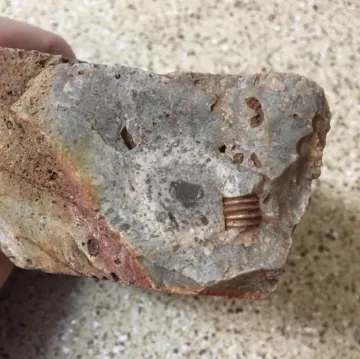
Crinoid stem in limestone matrix from Diamond Point, Payson, Gila Co., AZ. Pennsylvanian age (~300 million years). The Payson area is a hotbed for paleo sites and fossil hunting.
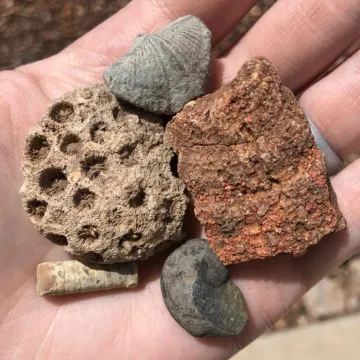
A selection of our favorites! Left to right: hexagonaria coral, brachiopod, horn coral, gastropod, crinoid stem. Which one is your favorite? Have you ever found a fossil while rockhounding?
To learn more about the AMMNRE Museum mineral collection, click here.

